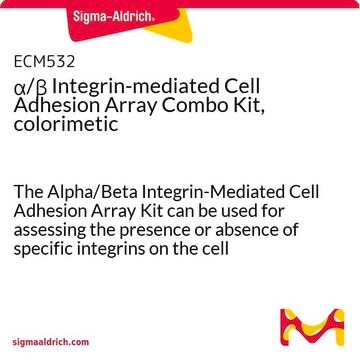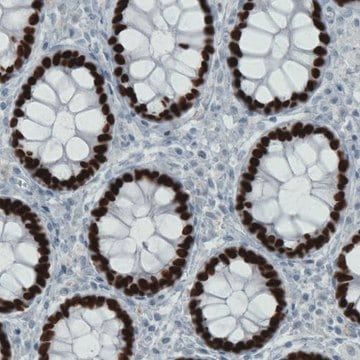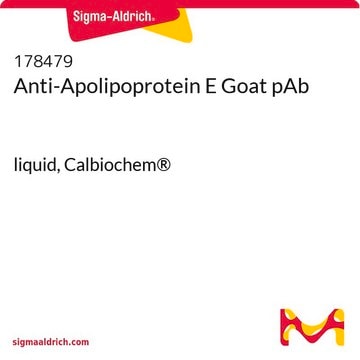SRP2055
PPARβ, ligand binding domain (165-441) human
recombinant, expressed in E. coli, ≥70% (SDS-PAGE)
Synonym(s):
FAAR, MGC3931, NR1C2, NUC1, NUCI, NUCII, PPARB
Sign Into View Organizational & Contract Pricing
All Photos(1)
About This Item
UNSPSC Code:
12352200
NACRES:
NA.26
Recommended Products
biological source
human
recombinant
expressed in E. coli
Assay
≥70% (SDS-PAGE)
form
frozen liquid
mol wt
~33.2 kDa
packaging
pkg of 10 μg
storage condition
avoid repeated freeze/thaw cycles
concentration
250 μg/mL
color
clear colorless
NCBI accession no.
UniProt accession no.
shipped in
dry ice
storage temp.
−70°C
Gene Information
human ... PPARD(5467)
Biochem/physiol Actions
There is evidence that a group of closely related nuclear receptors, called peroxisome proliferator-activated receptors (PPARs), may be involved in chronic diseases such as diabetes, obesity, artherosclerosis and cancer. The PPARs were first cloned as the nuclear receptors that mediate the effects of synthetic compounds called peroxisome proliferators on gene transcription. It soon became clear that eicosanoids and fatty acids can also regulate gene transcription through PPARs. They bind a specific element in the promoter region of target genes only as a heterodimer with the receptor for 9- cis retinoic acid, RXR (retinoid X receptor). Binding of the ligand of either receptor can activate the complex, but binding of both ligands simultaneously is more potent. Three PPAR isotypes have been identified: α, β (also called NUC1) and γ. PPARα is expressed most in brown adipose tissue and liver, then kidney, heart and skeletal muscle. PPARγ is mainly expressed in adipose tissue, and to a lesser extent in colon, the immune system and the retina. PPARβ is found in many tissues but the highest expression is in the gut, kidney and heart. PPARβ has received little attention, probably because of the lack of a connection with important clinical manifestations. However, recently PPARβ has been linked to colon cancer, among other functions. PPAR regulates the expression of acyl-CoA synthetase 2 in the brain, linking PPARβ to basic lipid metabolism. Moreover, it probably participates in embryo implantation and decidualization.
Physical form
Clear and colorless frozen liquid solution
Preparation Note
Use a manual defrost freezer and avoid repeated freeze-thaw cycles. While working, please keep sample on ice.
Storage Class Code
10 - Combustible liquids
WGK
WGK 1
Flash Point(F)
Not applicable
Flash Point(C)
Not applicable
Certificates of Analysis (COA)
Search for Certificates of Analysis (COA) by entering the products Lot/Batch Number. Lot and Batch Numbers can be found on a product’s label following the words ‘Lot’ or ‘Batch’.
Already Own This Product?
Find documentation for the products that you have recently purchased in the Document Library.
T C He et al.
Cell, 99(3), 335-345 (1999-11-11)
PPARB was identified as a target of APC through the analysis of global gene expression profiles in human colorectal cancer (CRC) cells. PPARdelta expression was elevated in CRCs and repressed by APC in CRC cells. This repression was mediated by
Peroxisome proliferator-activated receptors: nuclear control of metabolism.
B Desvergne et al.
Endocrine reviews, 20(5), 649-688 (1999-10-26)
S Kersten et al.
Nature, 405(6785), 421-424 (2000-06-06)
In developed societies, chronic diseases such as diabetes, obesity, atherosclerosis and cancer are responsible for most deaths. These ailments have complex causes involving genetic, environmental and nutritional factors. There is evidence that a group of closely related nuclear receptors, called
Our team of scientists has experience in all areas of research including Life Science, Material Science, Chemical Synthesis, Chromatography, Analytical and many others.
Contact Technical Service








